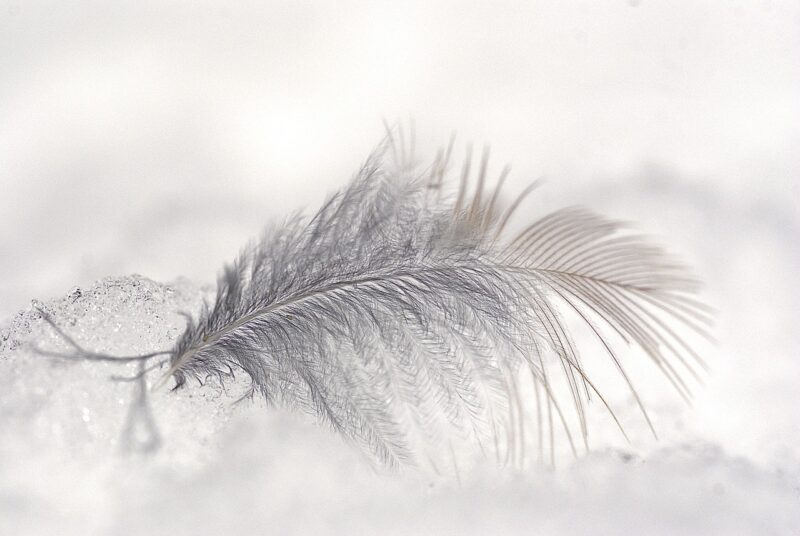The Surprising Role of Feathers in Ancient Clothing and Armor
November 15, 2024

Feathers have long captivated humanity with their brilliant colors and delicate structures. While we often associate feathers with birds and nature, their usage transcends the biological realm, lending themselves to various human expressions, ranging from fashion to functionality. Surprisingly, feathers played a significant role in ancient clothing and armor, serving as more than mere embellishments. This article explores the historical significance, practical applications, and cultural implications of feathers in ancient textiles and protective gear.
1. The Historical Context of Feathers in Ancient Cultures
Feathers have been utilized by ancient civilizations across the globe. From the Indigenous Peoples of North America to the Aztecs and Egyptians, feathers symbolized power, prestige, and spiritual connection. In many cultures, feathers were believed to carry messages from the gods or spirits, making them essential in religious and ceremonial attire.
- Native American Tribes: Many tribes, such as the Sioux and Cheyenne, adorned themselves with feathers as symbols of bravery and achievement. The number and type of feathers indicated rank or accomplishments in battle, with eagle feathers being the most revered.
- The Aztec Civilization: Feathers were intricately woven into elaborate costumes, worn by warriors and nobility. The Aztecs prized quetzal feathers, known for their vibrant green hue, which were used to create honorific garments that showcased the wearer’s elite status.
- Ancient Egyptians: Feathers, especially those of the ostrich, symbolized Ma’at, the goddess of truth and justice. The individuals’ wealth and social standing could be indicated through their elaborate feathered adornments, both in clothing and decorative items.
The variety of ways feathers were used in ancient clothing showcases their intrinsic value in several cultures, establishing their importance beyond mere aesthetics.
2. Feathers as Functional Components of Armor
Feathers were not only revered for their beauty; they also played a functional role in armor, particularly in ancient warfare. Their lightweight nature made them ideal for enhancing mobility while providing protection.
- Insulation and Lightness: In temperate regions, warriors often wore feathers as a means to insulate their bodies. The feathers could trap air, offering warmth in cold conditions without the weight of metal or leather armor.
- Cushioning Effect: Feathers were employed in the construction of early forms of protective padding. For example, the Romans occasionally incorporated dried feathers into their gear, which acted as a cushion against blows while remaining relatively lightweight.
- Camouflage: Depending on their coloration, feathers could provide effective camouflage in battle. Warriors adapted their feathered attire according to the environment, using natural hues to blend into their surroundings. This adaptability gave them an edge over their opponents.
The practical applications of feathers transformed how ancient civilizations approached warfare, augmenting their arsenal with lightweight yet protective materials.
3. Symbolism and Social Status Associated with Feathers
Beyond their functional aspects, feathers were deeply imbued with symbolism and hierarchical meaning in ancient societies.
- Symbol of Spirituality and Divine Connection: In many cultures, feathers were viewed as conduits between the human realm and the divine. For example, in Native American traditions, eagle feathers were believed to carry prayers to the spirit world, while their incorporation into garments signified the wearer’s close relationship with the divine.
- Expressions of Identity and Power: The elaborate use of feathers in headgear, such as the headdresses of Plains Indians or the feathered crowns of Mesoamerican leaders, indicated social hierarchy, demonstrating wealth and military prowess. The more elaborate the arrangement, the higher the status of the wearer.
- Cultural Rituals: Feathers often played a pivotal role in cultural rituals and ceremonies. In many cases, they were used in dances or as offerings, emphasizing their significance in cultural storytelling and preservation.
The cultural weight of feathers in ancient societies lends insight into their value as more than just decorative items or functional components, but as pivotal elements in identity and tradition.
4. Crafting Techniques and Material Utility
The process of working with feathers required significant skill and knowledge, reflecting the ingenuity of ancient artisans.
- Weaving and Sewing: Techniques varied across cultures, including weaving feathers into fabric or sewing them onto garments. The Incas, for instance, were known for their intricate featherwork, creating visually striking garments that showcased their artistry and cultural motifs.
- Dyeing Feathers: Ancient civilizations often dyed feathers to achieve vibrant colors for ceremonial or military attire, showcasing both skill and understanding of natural pigments available in their environment.
- Feather Maintenance: To maintain their beauty and longevity, ancient cultures developed techniques for treating feathers, including cleaning and oils to retain their sheen and color. This indicates a level of reverence for the materials they used.
These craftsmanship methods highlight the multifaceted relationship between ancient cultures and their use of feathers, encompassing a combination of art, utility, and spiritual significance.
5. The Evolution and Legacy of Feather Use in Clothing and Armor
The legacy of feather use in ancient clothing and armor is multifaceted. As civilizations evolved, so too did their use of materials and craftsmanship, leading to innovations and changes in the cultural symbolism of feathers.
- Emergence of New Materials: With the advancement of technology and trade, materials such as metals and synthetic fibers began to overshadow the use of feathers. However, contemporary artisans often draw inspiration from ancient practices, reviving featherwork in modern fashion and crafts.
- Cultural Resurgence: Today, the symbolic meanings of feathers in fashion and art continue to resonate. Designers often incorporate feathers into haute couture, drawing from the rich history of these materials while paying homage to traditional craftsmanship.
- Sustainability Practices: With modern discussions surrounding sustainability, there is a growing interest in natural materials like feathers. Reassessing their role in fashion raises questions about how ancient practices can inform contemporary ecological practices.
The ongoing interest in feathers reflects a deep-rooted appreciation for cultural history and ecological awareness, prompting a reevaluation of materials in contemporary practices.
Conclusion
Feathers have played a significant role beyond mere decoration; they served as symbols of status, function in warfare, and showcased the ingenuity of artisans throughout ancient civilizations. Their application in clothing and armor underscores a rich tapestry of history that connects spirituality, identity, and creativity. As we explore how feathers were woven into the fabric of ancient cultures, it becomes evident that their legacy continues to inspire modern artistry, offering timeless lessons on the value of natural materials and craftsmanship. In recognizing the surprising depth of feathers’ roles, we can appreciate their place in history and their potential for future innovation in fashion and function.







